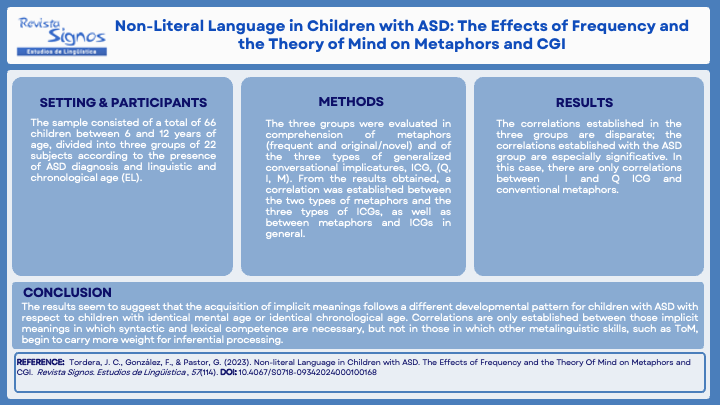El lenguaje no literal en niños con TEA
Los efectos de la frecuencia y de la Teoría de la Mente en las metáforas y las ICG
Palabras clave:
Trastorno del espectro autista, lenguaje no literal, Metáforas, Implicaciones Conversacionales Generalizadas, desarrollo del lenguajeResumen
El objetivo de este trabajo consiste en analizar la relación entre la comprensión de las metáforas, tanto originales como convencionalizadas, y la comprensión de las implicaturas conversacionales generalizadas (ICG, tipo I, Q y M) en tres grupos de niños: uno con trastorno de espectro autista (TEA) y dos, con desarrollo normotípico. A través de esta comparación, se puede llegar a la conclusión de que el grado de convencionalización está fuertemente ligado a su comprensión, como ponen de manifiesto los resultados obtenidos con los niños con TEA. Además, dicha comparación también nos permite observar cuándo la Teoría de la Mente (ToM) puede ser más necesaria en los distintos significados no literales.
×
![]()
Publicado
2024-04-10
Cómo citar
Tordera Yllescas, J. C., González-Sala, F., & Pastor-Cerezuela, G. (2024). El lenguaje no literal en niños con TEA: Los efectos de la frecuencia y de la Teoría de la Mente en las metáforas y las ICG. Revista Signos. Estudios De Lingüística, 57(114). Recuperado a partir de https://revistasignos.cl/index.php/signos/article/view/672
Número
Sección
Artículos
Licencia
Derechos de autor 2024 Revista Signos. Estudios de Lingüística

Esta obra está bajo una licencia internacional Creative Commons Atribución 4.0.
Aquellos autores que tengan publicaciones con esta revista, aceptan los términos siguientes:
- Los autores conservarán sus derechos de autor y garantizarán a la revista el derecho de primera publicación de su obra por medio de este documento de cesión de derechos de autoría, el cuál estará simultáneamente sujeto a la licencia de reconocimiento de Creative Commons que permite a terceros compartir la obra siempre que se indique su autor y su primera publicación esta revista.
- Los autores podrán adoptar otros acuerdos de licencia no exclusiva de distribución de la versión de la obra publicada (p. ej.: depositarla en un repositorio institucional o publicarla en un volumen monográfico) siempre que se indique la publicación inicial en esta revista.
- Se permite y recomienda a los autores difundir su obra a través de Internet (p. ej.: en publicaciones institucionales o en su página web) antes y durante el proceso de envío, lo cual puede producir intercambios interesantes y aumentar las citas de la obra publicada. (Véase el efecto del acceso abierto).










